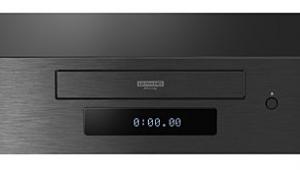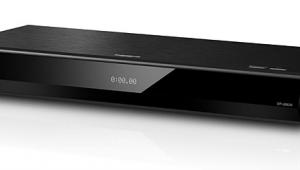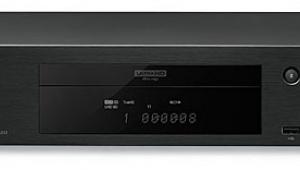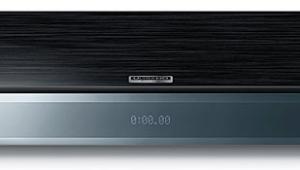Sony PlayStation 3 Game Console/Blu-ray Player
 Price: $300 At A Glance: Now bitstreams Dolby TrueHD and DTS-HD Master Audio • Fast and reliable Blu-ray playback • Built-in Wi-Fi for Web interactivity and firmware updates
Price: $300 At A Glance: Now bitstreams Dolby TrueHD and DTS-HD Master Audio • Fast and reliable Blu-ray playback • Built-in Wi-Fi for Web interactivity and firmware updates
We’ve reviewed Sony’s PlayStation 3 twice in Home Theater (March 2007 and May 2008). Since Sony has provided many updates to its software and hardware, it deserves another look. When it originally launched in November 2006, the Blu-ray format was on the ropes due to its lackluster titles and handicapped first-generation players. Even die-hard supporters were wobbly in the legs, and they pinned their hopes on the delayed game system as the format’s savior.

Their hopes were ultimately redeemed. The PS3 effectively ended the format war—even though it took Toshiba more than a year to wave the white flag. For more than three years, the PS3 has dominated the landscape as the best Blu-ray player on the planet because of its incredible speed, rock-solid stability, and constant updates.
In spite of their many fine attributes, the previous PS3 models aren’t perfect. For one, they can’t bitstream Dolby and DTS’s advanced audio codecs.
The fan is loud—crop-duster loud on my first-generation 60-GB model—and they don’t have an IR remote sensor for third-party remotes. Enter the new PS3. This latest-generation PS3 fixes all but one of the original blemishes.
Does This Case Make Me Look Fat?
Aesthetically, the slimmed-down PS3 looks like the offspring of a PS3 and the last-generation PS2. It’s smaller, lighter, and finished in a textured matte black versus the beefier original with its gloss black enclosure. The PS3 only has two USB inputs (versus the previous generation’s four) and lacks a memory card reader, but at least it doesn’t attract dust and show every fingerprint. Like the original unit, the PS3’s HDMI connection can output 48-bit Deep Color and x.v. Color. However, neither DVD nor Blu-ray currently supports these features.


Sony replaced the touch-sensitive power and eject buttons on the front panel with very responsive push buttons. It also omitted the power switch on the unit’s back. Connections on the rear are the same. These include an HDMI 1.3a output, an Ethernet jack, an optical digital (S/PDIF) output, and a proprietary A/V output for analog audio (stereo only) and video (component, S-video, or composite).
HDMI is the preferred connection for 1080p video (both 24p and 60p) since the component output is capped at 1080i. Furthermore, since the player doesn’t offer multichannel analog outputs, your audio options are limited. The original PS3 only supported multichannel PCM, so it had to internally decode Dolby TrueHD, Dolby Digital Plus, and DTS-HD Master Audio and convert them to PCM. A change in the HDMI transmitter chip now allows a raw bitstream output for Dolby TrueHD and DTS-HD Master Audio, but you lose secondary audio (like PiP tracks) as well as the clicks and beeps in Blu-ray Disc menus. Still, you’ll have the satisfaction of seeing the Dolby TrueHD or DTS-HD Master Audio indicator light up on your AVR.
Under the Hood
The PS3 has a 120-gigabyte hard drive and is powered by the latest Cell processor chip. It’s smaller and more energy efficient than the original—I’ve read reports that it’s as much as 50 percent! So the PS3 draws less power and generates less heat than the original. This allows Sony to use a more efficient cooling fan that’s virtually silent compared with the fan in its first-generation PS3.
- Log in or register to post comments






























































